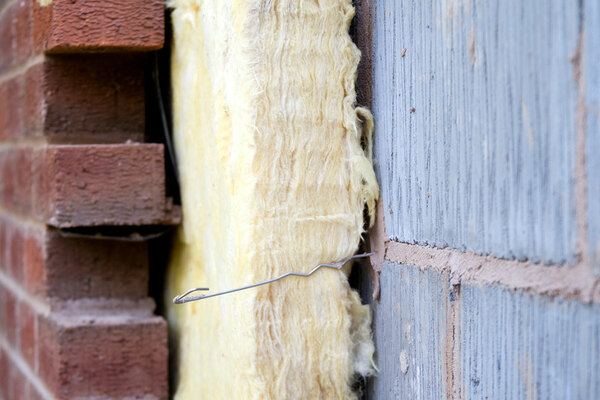You are viewing 1 of your 1 free articles
Major report highlights widespread insulation issues at giant social landlord
One of the UK’s largest social landlords has uncovered widespread issues with the cavity wall insulation fitted across its stock.
A major report published on Thursday by the Northern Ireland Housing Executive (NIHE) found that 63% of its homes have cavity wall insulation that is non-compliant with current industry standards.
In contrast, a survey of private homes found that only 34% had non-compliant cavity wall insulation.
The research was carried out for the 86,500-home landlord by Consultancy, Investigation and Training (CIT), a subsidiary of certification body the British Board of Agrément, over concerns about the standard of cavity wall insulation in NIHE homes.
Surveyors discovered voids or debris in the insulation of nearly two-thirds of the housing authority’s stock.
CIT has recommended that the NIHE prioritises remediation work, trains up its staff, sets industry standards for suppliers and seeks compensation from firms responsible for installing non-compliant insulation.
It also suggested that the landlord establishes mechanisms for tenants to raise concerns about the cavity wall insulation in their homes.
Tom Woolley, a visiting professor at Anglia Ruskin University and an architect at Rachel Bevan Architects, who sat on the Insulation Performance Panel that scrutinised CIT’s research, said: “We know that there have been cavity wall disasters throughout the UK but there have been very few thorough in-depth studies done.
“This report is very revealing in that it does indicate how poorly cavity wall insulation was done a few decades ago.
“From what I know of studies that have been done elsewhere by the campaign for the victims of cavity wall insulation, cavity wall insulation is defective across the board and it’s a massive problem throughout the whole of the UK.”
The NIHE said it will consider and consult on the recommendations and will bring forward a long-term plan later this year, but will “immediately focus on those properties in which CIT has indicated a specific need for urgent remedial work”.
“We carried out an extensive programme of insulating cavity walls in the 1980s and 1990s,” a spokesperson for the NIHE said.
“However, like many other UK social housing providers we have been increasingly concerned by nationwide reports of cavity wall insulation no longer performing as required due to degradation or poor installation.”
It added that any cavity wall insulation upgrades “will have to be prioritised against the many other significant investment needs for our housing stock”.
“Once again this brings into sharp focus the need to secure a sustainable funding model for the Housing Executive, particularly with regard to access to external borrowing,” the spokesperson said.
For 1% of the NIHE homes investigated, the external façade had deteriorated enough for their internal fabric to be compromised, while 32% had building fabric that had been compromised but was “stable”.
Another 51% had minimal building fabric defects with no serious underlying causes and 16% were found to be defect free.
More than 800 NIHE homes and 100 privately owned homes were surveyed as part of the research.
Among the private homes, 1% also had an external façade in very bad condition but 41% had no defects at all.










